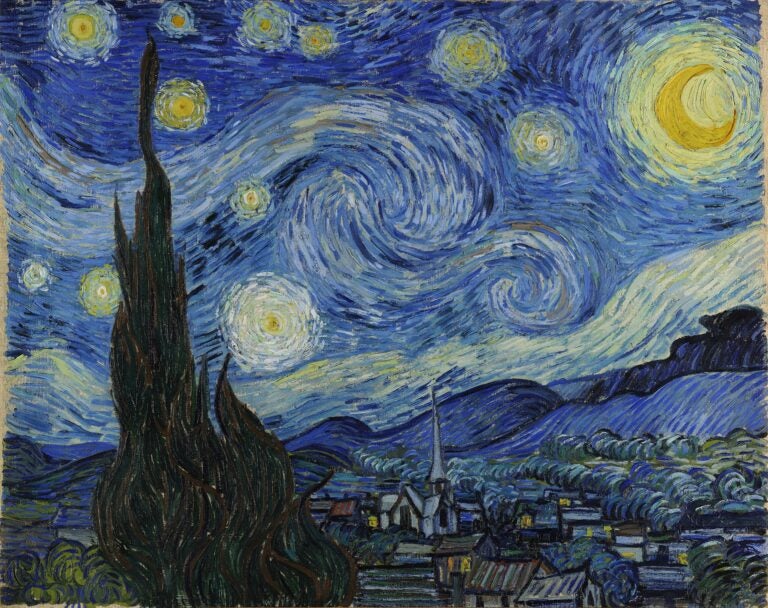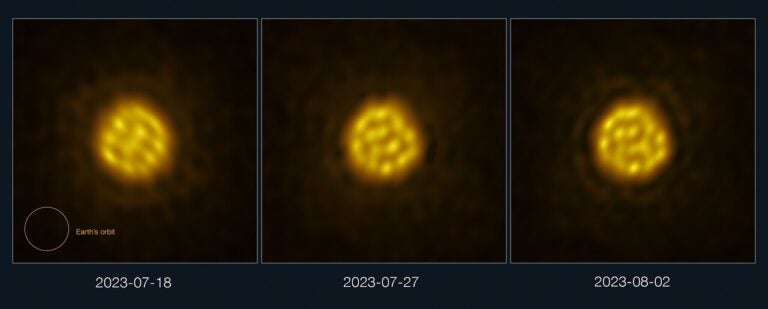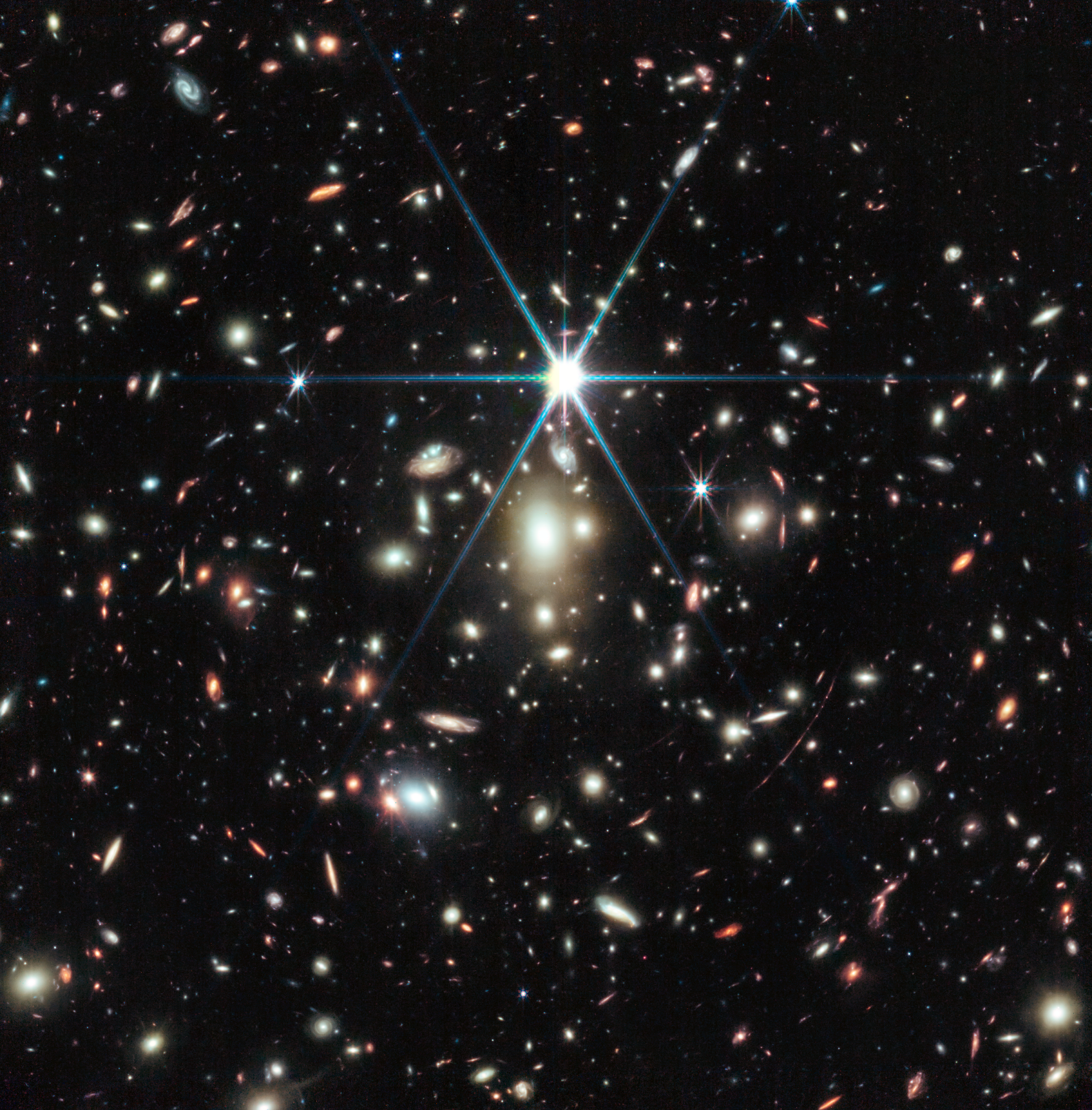
The farthest known star in the universe was recently observed by James Webb Space Telescope (JWST), following up on the Hubble Space Telescope’s 2022 discovery. Although it appears as a tiny dot in the image, the star is a gateway to understanding conditions in the very early universe.
Nicknamed Earendel, this star sits among the red-orange curved visage of the Sunrise Arc Galaxy, just southeast of the bright star sporting large diffraction spikes in the image. Data from JWST’s Near-Infrared Camera (NIRCam) have now indicated it is a large B-type star more than twice as hot as our Sun as well as dramatically more luminous, according to a NASA news release. According to the release, astronomers also believe Earendel may have a companion: a smaller, cooler sun in its system. Although the companion was not definitively detected, there are clues to its presence in Earendel’s light.
The image is noticeably dominated by a huge galaxy cluster WHL0137-08, which is what allowed scientists to view Earendel, thanks to gravitational lensing. This scientific phenomenon occurs when massive celestial objects like WHL0137-08 bend the fabric of space-time around them, which magnifies and distorts light from objects behind them. This is why the Sunrise Arc Galaxy looks like a curved line, as this galaxy’s image is distorted by the gravitational lens.
Also featured in this image are the other objects in the Sunrise Arc. These include both young star-forming regions and older star clusters, seen as small dots on either side of Earendel.
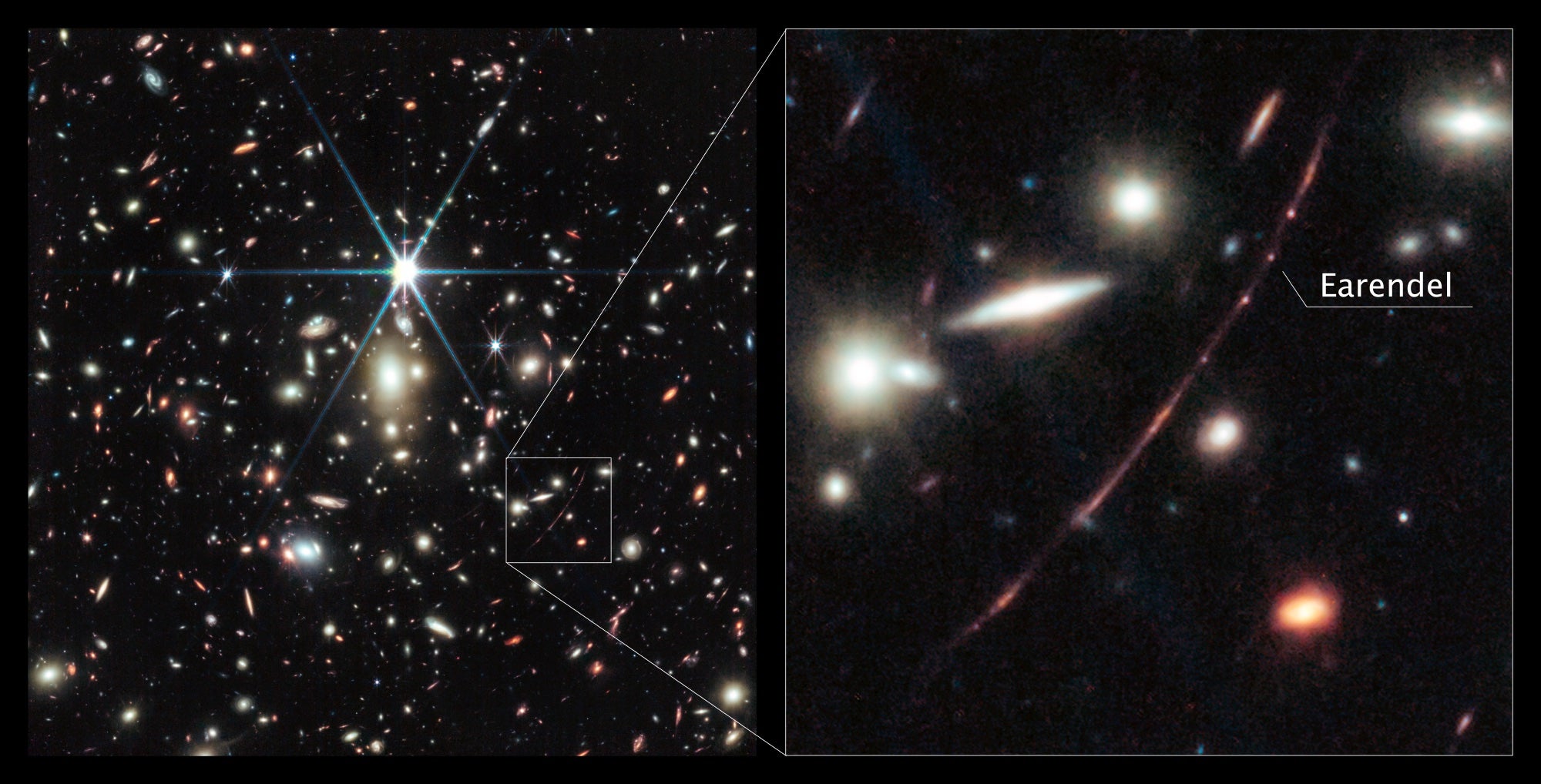
Earendel shines at a time that is just about a billion years after the Big Bang. While it’s still the earliest-known star, other famous distant stars include the red giant Quyllur, which was created 3 billion years after the Big Bang.
Between JWST and Hubble, there is hope that scientists will someday detect the very first generation of stars, suns made up of only hydrogen and helium.





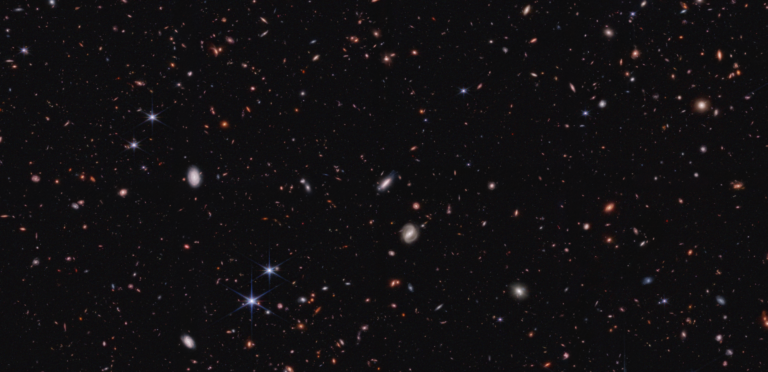
![Albireo (Beta [β] Cygni) is a classic example of a double star with contrasting colors.](https://www.astronomy.com/uploads/2024/08/Albireo.jpg)
